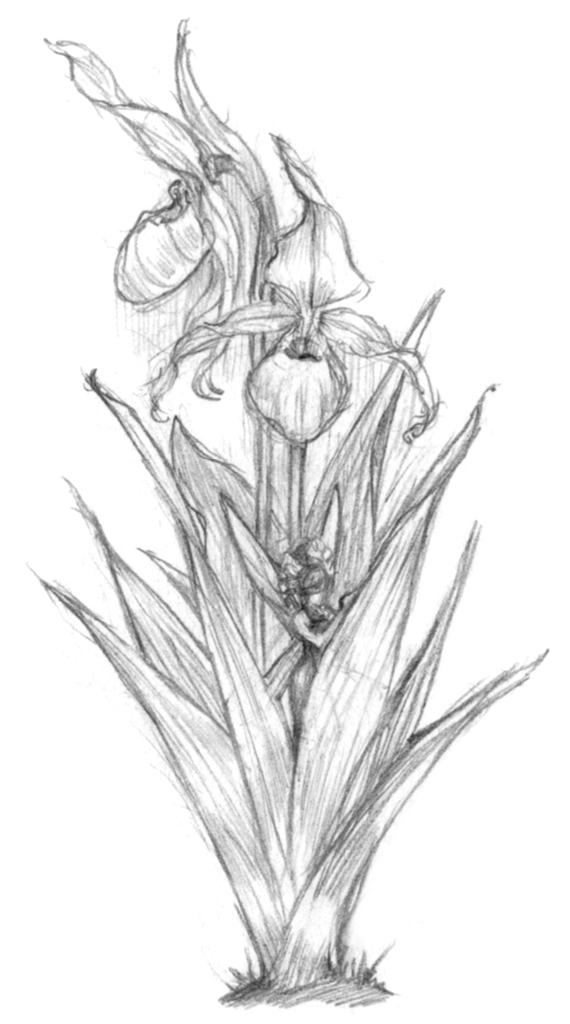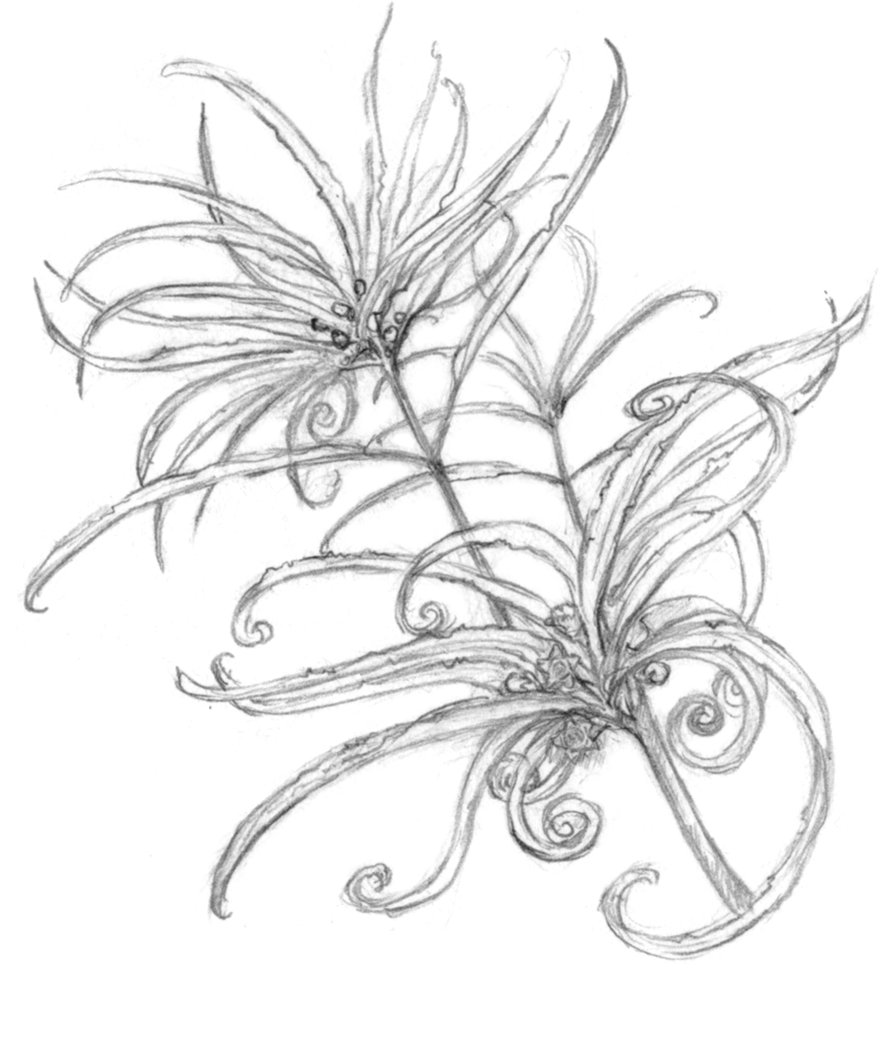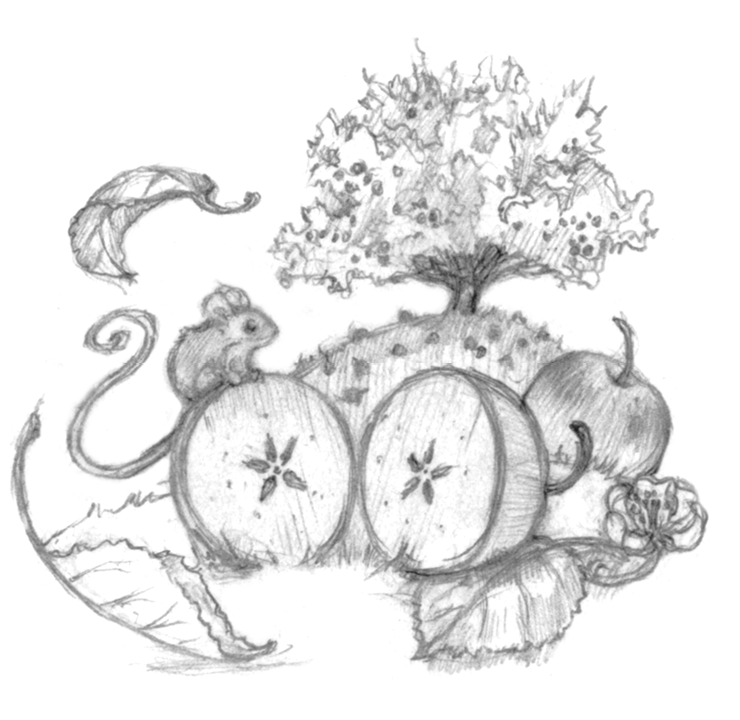Garden Witch's Herbal (13 page)
Read Garden Witch's Herbal Online
Authors: Ellen Dugan
Tags: #witchcraft, #wicca, #spells, #herb, #herbal, #herbalism, #garden, #gardening, #magical herbs, #herb gardening, #plants, #Pagan garden, #nature, #natural, #natural magick, #natural magic

tickseed coreopsis
Tickseed Coreopsis (
Coreopsis lanceolata
)
The coreopsis is part of the daisy family, and its several stems, up to three feet in height, make for a noticeable glade species. The flowers are bright yellow, with large heads about two inches across, and the ends of the petals are jagged. Bloom time runs from April through June. Leaves are narrow, undivided, and mostly arranged at the bottom of the stems. Coreopsis loves the sun, and you can find it growing in prairies, glades, and along roadsides.
Tickseed coreopsis is now widely available as a nursery plant. This perky little golden perennial attracts butterflies and brightens up many a flower garden. It is also drought tolerant, and it is the official state wildflower of Florida. When grown in the garden, they make great cut flowers, and they are not too fussy about soil types. At home in my gardens, the coreopsis blooms off and on through September, while the heaviest blooming occurs in late May through June.
In the language of flowers, the coreopsis is a symbol for a person who is always bright and cheerful. Astrological association is the sun, and the elemental association is fire. Magickally, you could work with the coreopsis for antidepression spells and to bring about good luck and better days.
Banishing the Blues with Coreopsis
May these bright yellow flowers brighten up my days,
Banishing the blues and chasing sadness away.
Now encourage good cheer, smiles, and laughter,
May I be content forever after.
Close the spell with these lines:
This cheerful wildflower spell is spun from the heart,
Worked for the good of all with a Green Witch's art.

yellow lady's slipper
Yellow Lady's Slipper (
Cypripedium pubescens
)
The yellow lady's slipper is part of the orchid family. They are rare and exotic wild orchids and can grow up to two feet tall. These flowers have brown-bronze, twisting flags, one upright and the others on either side of the yellow “slipper.” There are also pink and white varieties of lady's slippers as well. Other common names for this romantic wildflower include whippoorwill's shoe, yellows, slipper root, and Indian shoe. Bloom time for this beauty is April through June. The leaves are bright green and prominently veined; the stem is long, sharply tapered, and fuzzy. The lady's slipper prefers acid soil in part shade to shade and in upper and middle elevations of north- and east-facing wooded slopes.
According to old folklore, wherever Cinderella dropped her shoe, that's where lady's slippers will grow. (Apparently Cinderella was running amok in the forests and woodlands in her ball gown.) In the language of flowers, the lady's slipper sweetly stands for a beautiful, whimsical person or capriciousness. Magickally, the energies of the lady's slipper are often worked with protection magick.
If you should find such a rare flower growing wild, consider yourself very fortunate indeed. Do not disturb the area, and leave the lady's slipper be. Just quietly enjoy the experience. The nature spirits surely must be watching over you to have given you such a gift. The lady's slipper's astrological influence is Saturn, and the elemental association is water.
Faerie Blessing with the Lady's Slipper
A rare wild orchid is the lady's slipper,
May the nature spirits hear me and come hither.
Please bless me now, with good fortune and wisdom true.
I'll always have respect for nature and for you.
Close the spell with these lines:
This faerie wildflower spell is spun from the heart,
Worked for the good of all with a Green Witch's art.
Closing Thoughts on
Wildflower Witchery
Where Cinderella dropped her shoe,
'Tis said in fairy tales of yore,
T'was there the first lady's slipper grew
And there its rosy blossom bore â¦
elaine goodale eastman

Remember to walk softly upon the earth as you work your green magick with wildflowers. These flowers are intricately connected with the spirits of the land, and those nature spirits will be watching you carefully to see how you treat the wildflowers as you work magick with them. They are indeed little natural treasures, so value them, respect the land, and harm nothing in nature as you work your green magick to create a positive change.
Chapter 5
Magick in the Hedgerows
If there's a bustle in your hedgerow,
don't be alarmed now;
it's just a spring clean for the May Queen.
robert plant,
stairway to heaven

Once upon a time, when people cleared a forest for settlement, the hedge served as a division between the wilderness and the home front. According to tradition, the hedgerow divided fields and kept farm animals in and wild animals out. The hedgerow created an entire food web for insects, birds, and small mammals. A hedgerow was and is still
utilized as a living boundary. The terms
hedge
and
hedgerow
come from the Anglo-Saxon words
haga
,
hege
, and
hegeroewe
, which is defined as a fence or boundary formed from a thick row of shrubs or smaller trees. Anglo-Saxon estate boundaries were usually marked with hedgerows, many of which, hundreds of years later, still designate the borders of some parishes today in Britain. There are some hedgerows that are thought to be a thousand years old.
The old hedgerows were not only planted to surround farmland and to denote the boundaries of a landowner's property, they also protected the crops and livestock and kept deer, bears, and wolves out. These hedges of shrubs, plants, and small trees were also used cleverly along waterways and wetlands to protect the fish by keeping the destructive hoofs and waste of farm animals away from shorelines, which improved the water quality for the community as well as the surrounding areas.
Now, for many of us, holding wolves and bears at bay or keeping livestock out of our water supply is not a pressing issue. However, the hedgerow is very suitable for the urban magickal gardener and for those who own small rural properties. Planting a hedgerow gives you the opportunity to work with your own native plants and to encourage biodiversity. Here is your chance to encourage wildlife such as birds and beneficial insects to come in. A hedgerow can, in fact, make a living green privacy fence with four-season interest. If your hedgerow plants are correctly chosen to work well with your particular growing conditions, such as your cold hardiness zones, and incorporate native plants, shrubs, and smaller trees, you will have a winning combination. Native plants tend to be more drought tolerant, and once established, the classic hedgerow needs very little maintenance.
Magickal Plants of the Hedgerows
The fair maiden who, the first of May,
Goes to the fields at the break of day
And washes in dew from the hawthorn tree
Will ever after handsome be.
old english rhyme

Traditionally, a Witch's property or garden was thought to contain at least one hawthorn hedge. Hawthorn was not only a magickal plant of many powers, it was and is still today highly valued as the foundation plant of the hedgerows. The blackthorn, wild rose, and gorse were all popular plants that were typically utilized in the hedgerows also, as was the elder tree, the hazel, apples of several varieties, and the bramble, otherwise known as the wild blackberry.
Now, you will notice as you read farther along that all of these featured plants produce fruit, whether for human consumption or for bees, birds, and other small game. A greater variety of plants in the hedgerows only encourages and supports a broader diversity of local wildlife. The hedgerow is like a miniature ecosystem. I should also mention that native trees such as the oak, ash, and maple were also utilized in the structure of hedgerows, as were hundreds of varieties of wildflowers that volunteered or were purposefully planted to increase the hedgerow's biodiversity. The majority of the featured hedgerow plants are also full of thorns, which helped keep larger livestock and other problem animals at bayânot to mention making it tough for an adversary to get through the thorns and onto your property without injury.
As in the wildflower sections, the hedgerow plants will also be listed first by their common name, with the botanical name in italics. Why do I list the botanical names, you wonder? Well, as a gardener and magickal herbalist, botanical names are key, as they make identification exact, and in the long run, they make working with the plants easier.
Garden Witch Tip:
It is important to note that some of the classic hedgerow species such as the gorse and the alder buckthorn are considered noxious weeds in certain parts of the world. Check with your local conservation department or a reputable nursery for other native plant suggestions that will benefit the ecosystem. There are many options available to you.
Each of the following traditional hedgerow plants will feature a description of the leaves and fruits, a bit of folklore, any astrological correspondences, and, of course, the plant's magickal information as well. Happy spellcasting!
Featured Hedgerow Plants
And still the dog rose shines in the hedge.
John Montague


alder buckthorn
Alder Buckthorn (
Rhamnus frangula â
Asplenifolia'
)
Also called the glossy buckthorn or the fern-leaf buckthorn, this European variety is an upright, spreading deciduous shrub that usually grows six to twelve feet tall and spreads six to ten feet wide. The buckthorn's glossy green leaves are quite unusual in that they are extremely narrow with irregular margins; they are often described as “long and lacy.” This shrub resembles a willow and has a weeping effect in its growth characteristics. The fall color of the leaves is yellow. Clusters of tiny white-green flowers appear in the leaf axils in May. The alder buckthorn's flowers are attractive to bees but are classified as “ornamentally insignificant.” These tiny flowers give way to green drupes (the fruit) that measure about a quarter of an inch in diameter. The fruit starts out green but turns red and finally black over the months of July to September. This shrub is prized for its foliage and is often utilized today as a specimen plant or grown together as a screen. The alder buckthorn is often recommended in the landscape for use as a bird-friendly hedge.
Magickally, the buckthorn was incorporated into spells for protection, and folklore states that it was also used in full moon charms cast so the Witch could be visited by the elves. Carrying a few buckthorn leaves in a charm bag is also thought to bring you good luck in court. Finally, placing buckthorn branches above your doorways and windows is supposed to render the home spellproof from outside influences. The astrological influence of this hedgerow plant is Saturn; the elemental correspondence is water.
A Buckthorn Charm Bag for Good Luck
This hedgerow charm will work best if cast during a waxing moon. As the moon grows fuller, so too will your good luck grow.
Place the fresh alder buckthorn leaves inside of a green sachet bag or use a six-inch square of green cotton fabric. Put the leaves in the middle, pull up each corner, and tie it closed with a green ribbon for prosperity and luck. Now hold the charm bag in your hands and enchant it with the following verse:
These fresh green buckthorn leaves will create a charm,
Bringing good luck in court and causing no harm.
This good-luck hedgerow spell is spun from the heart,
For the good of all and with a Green Witch's art.
Tuck the charm bag in your pocket, and keep it with you for good luck.

apple
Apple (
Pyrus malus
)
The apple tree is a tree of the Goddess. In Norse mythology, Freya dispensed golden apples to the gods so they could share in the magickal gifts of this fruit. The Celts believed that the apple tree was a good omen and that it grew in Paradise and was the keeper of all knowledge. The apple was known as the fruit of the gods, the fruit of the underworld. The old rhyme “An apple a day keeps the doctor away” comes from the belief that the apple was a magickal cure-all.
It is thought that cultivated varieties of the apple were probably introduced to Britain by the Romans. During medieval times, monastic gardens increased the varieties of apple trees by grafting shoots of the trees onto established rootstock. The wild apple is native to Europe and western Asia. It has a short trunk and can grow from twenty to forty feet high. The bark is described as grey, broken, and scaly. The apple may be found growing wild in rural and sub-rural areas, typically wherever humans have lived. The leaves of the apple are classically described as broad, flat, simple, and being of the same size. The apple tree bears clusters of five-petaled white ï¬owers that are blushed with pink. Some modern varieties of apple trees do bear a reddish pink blossom. The blossoming time is typically April through June but will vary widely depending on the particular variety of apple. Apple blossoms represent youth, love, fertility, and enchantment. Also, apple blossoms are the state flower of Arkansas.
The fruit matures in summer and is larger than that of the crab apple. From a botanical standpoint, the fruit of the apple is called a pome. The fruit of wild apple trees average three and a half inches across, while modern varieties and cultivars measure much larger. The apple was a favorite medieval fruit, and as you would imagine, they were mainly used as a food source, eaten cooked or raw, made into sauces and jams, and included in a variety of dishes.
